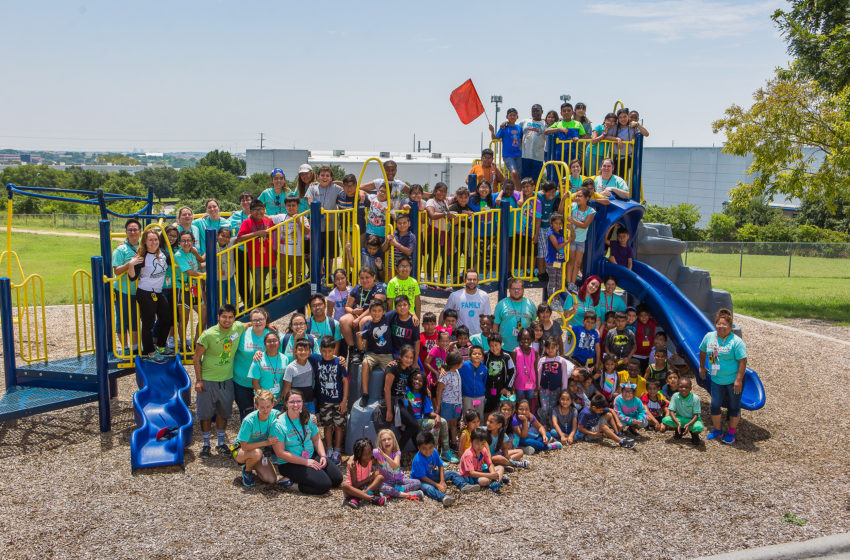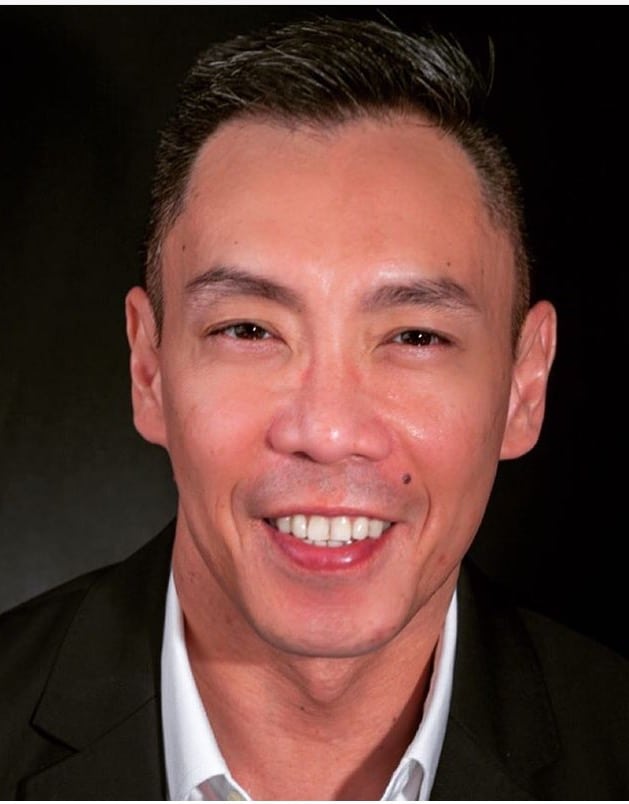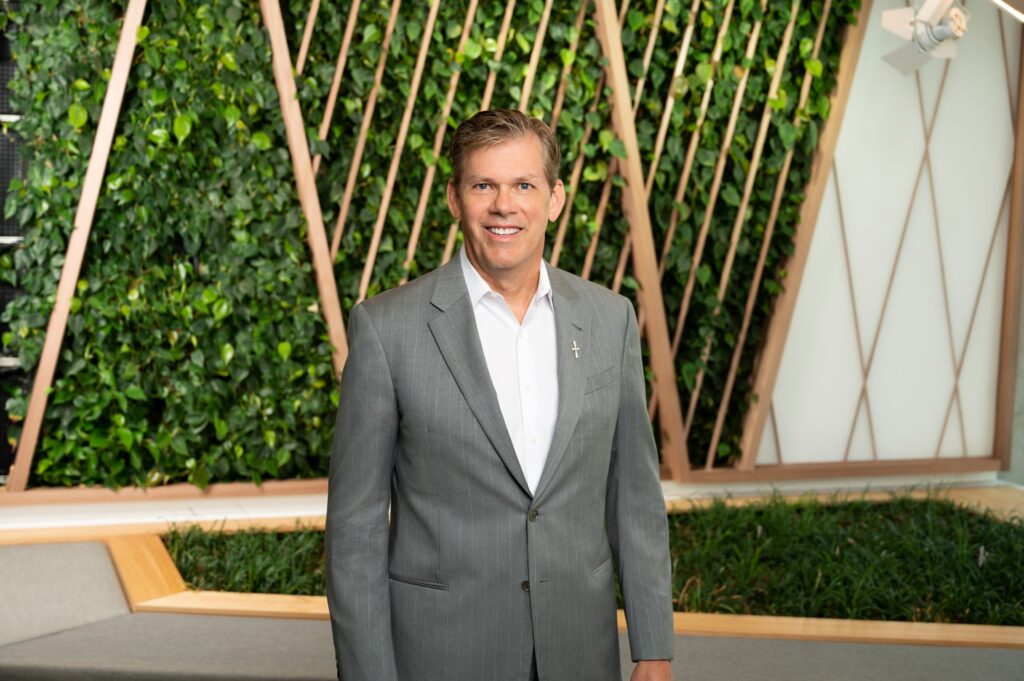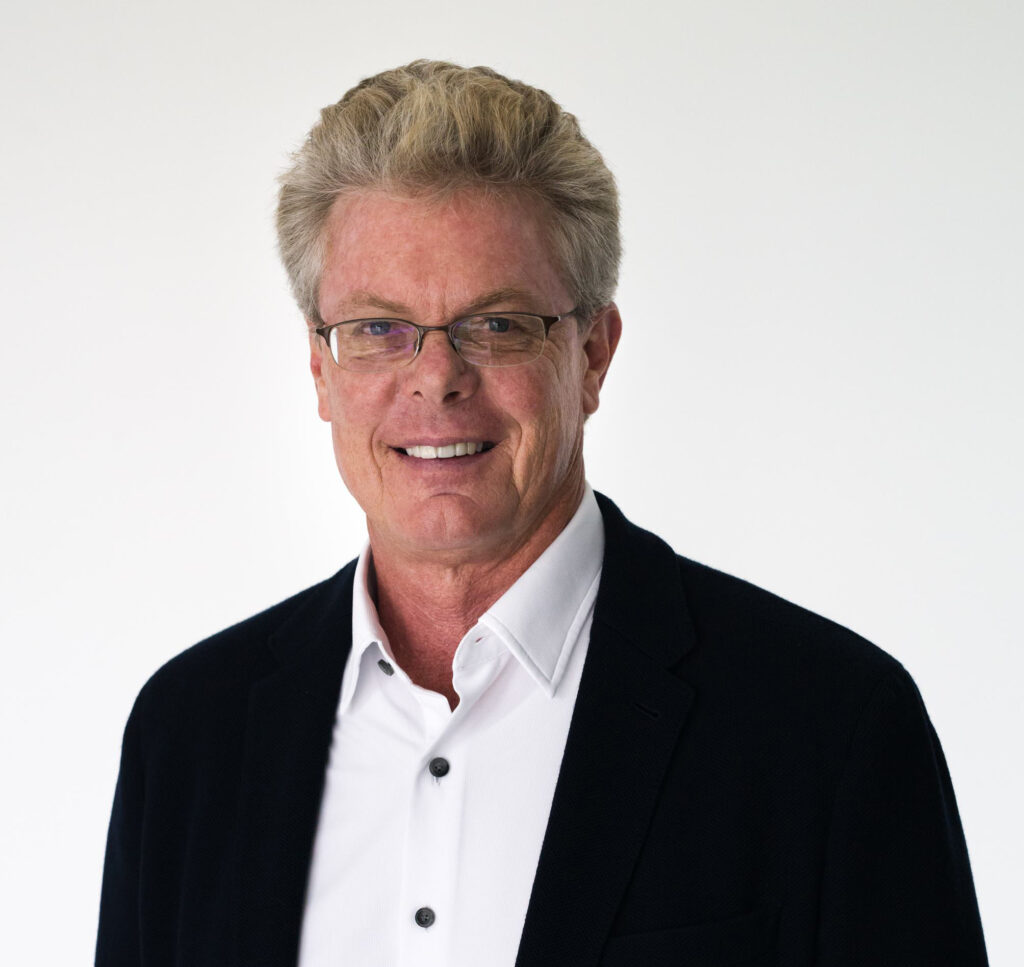Building a Brighter Future for Central Texas Kids

An interview with Richard Tagle, CEO of the Andy Roddick Foundation
For 20 years, the Andy Roddick Foundation has worked to give youth in low-income communities across Central Texas access to education and learning opportunities. Richard Tagle was born and raised in Manila and built his career in DC, but he’d only been to Texas twice when he accepted a job as the Andy Roddick Foundation’s CEO. Richard talked to us about his DC-to-Texas transition, the unique challenges of the nonprofit CEO, and how his passion for data gives him an edge—and, sometimes, gets him in trouble.

Texas CEO Magazine: How did you get into this interesting position as a nonprofit CEO?
Tagle: I was born and raised in the Philippines, in Manila. I was groomed to be an investment banker because of my seven aunts and uncles were all investment bankers. But at 16, I left the Philippines. I basically ran away. I love my family, but it was “This is the college to go to, this is the right course to take, this is the right girl to date.” Those expectations weren’t what I wanted for myself. I was ready to get out and go see the world. So I counted my Christmas money and my money from my summer job and got a one-way ticket from Manila to Hawaii to see my grandmother. I asked her if I could stay there. She said, “You can’t run away from home and live with me. Dignify it. If you really want to see the world, then see the world.”
So I moved to San Francisco. Later, in graduate school in Washington DC, I shifted gears from finance to public administration, then later on to social policy. I became more and more curious about how nonprofit organizations work and how communities change. Until then, I had no idea what a nonprofit organization was.
For my first foray in nonprofit work, I worked for the United States Conference of Mayors. I was 22, and I had to go to 88 of the poorest towns in the South to oversee the grants that all these mayors we’re giving to them.
When the Andy Roddick Foundation contacted me many years later, I had lived in Washington DC for 27 years, doing educational lobbying, running my own middle school academic program, and consulting. I’d only been to Austin twice prior to coming here for this job. It was March 2013 when they showed me around. I remember it because everything was so green.
Texas CEO Magazine: Right—you were probably picturing West Texas and tumbleweeds.
Tagle: That’s right. When I met with the staff and the board, I was really impressed—with them, with Andy, with the city. I said I could move in summer, which probably was the wrong thing to say. When I left the airport, it was 106 degrees.
Texas CEO Magazine: We have a lot of companies moving to Texas. As someone who came here from DC, what would you tell somebody who’s thinking about relocating to Texas?
Tagle: I was surprised by the open-mindedness here. Prior to moving to Texas, I’d always had this understanding that Texas is conservative and Republican. Having lived in DC for 27 years, a town that’s 98 percent Democrat, I really had hesitation. “Am I going to fit in there?”
But the number-one thing that surprised me is, whether you’re a Democrat or Republican in Austin, you’re still openminded about things. You still care about what happens in your neighborhood and community. People really want their schools to be great. They have different ideas of what level of investment there should be, and how to make that investment, but at the core of it, they really care about the children and the community. It’s the same for health, education, workforce development. I thought everybody here was like, “No government spending. No taxes. Nothing.”
The second thing that surprised me was the level of diversity. Everybody was telling me, “Oh, it’s not diverse. As a Filipino, you’re going to stand down.” But in my neighborhood, I live across from an Indian couple, two doors down is a Chinese family, next door is a Korean family. It’s become more diverse in the past decade. I still go to places where I’m the only person of color. That still happens. But the diversity is becoming more pronounced, especially in more affordable pockets of central Texas. As we address housing affordability and as more companies move here, I think that the diversity will increase.
Texas CEO Magazine: Are there any special challenges working in nonprofit education in Texas?
Tagle: The burden on Texas is that we are actually more diverse in some key ways. California may have more kids—they have 8 million—but we have a bigger rural-urban divide, and our kids are speaking more languages. Thanks to our size, whatever we do in this state is going to be the barometer of what the country has appetite for. So if we can make out-of-school learning a positive experience for young people, that’s going to be copied by the rest of the country. We’re beginning to convene all of these folks and explore how we make sure that there is learning support for the 5.4 million kids in our schools. We have the second-largest school population in the country. One of every 10 students in the country attended a Texas school.
Texas CEO Magazine: When you talk to donors, how do you explain convince them that making a donation to the Andy Roddick Foundation is worthwhile?
Tagle: There’s a lot of good nonprofit organizations out there. But I can tell you three things the Andy Roddick Foundation is set up to do.
The first is that we pay close attention to where the need is. It’s not about what we want to do, it’s about what we need to do. I’ll tell you a story. When I first moved here, Andre Agassi had just built a charter school, and Andy wanted to do the same thing. During that first board meeting I attended, Andy was talking about this charter school. It just so happened that KIPP was right next door to our donated space. I said, “Andy, just look outside the window. There’s a charter school right there. Why build something when you can just give money to that one?” I used my newness as the chip. I told them I didn’t know Austin, but that we should explore opportunities like that. For the rest of 2013, we did nothing but talk to families and other foundations about their needs and where the gaps were.
Rather than just duplicate programs, we spend hundreds of thousands supporting other organizations that are aligned with us. That’s how we scale kids’ opportunity to be exposed to a high-quality program. We bring these partners into the fold and expanding our reach that way.
The second thing is that we know how we are making a difference. I’m the research guy. I want data. I want to see that the needle is moving. We count everything from the level of family engagement in our programs to how often the kids come to our program on a daily basis. We can tell you our six-week retention rate during the summer, our daily attendance rates, the academic skills we start with and the academic skills we end up with. We publish an annual report showing how are kids doing in schools participating in our program in comparison to kids who have the same profile but don’t participate in our programs. The district helps us with that.
I was the same way when I was running Higher Achievement. I raised $3.2 million for a six-year randomized study that compared 500 kids who went into our program and 500 who couldn’t get into our program. Half the parents in DC love me because their kids got in, but the other half hated me. But now we have data to tell you that the program produces results. The US Department of Education uses that as the flagship research for the value of academic programs after school. Those parents are probably still mad at me, but seven million other kids will benefit from this research.
The third thing would be our commitment to continuous improvement. We use the data to improve: we do one thing in the first school, learn how we can make that more efficient in the second school, then even more so in the third school. If people share their resources with us, they can trust it will address real needs, that we will track the data, and that we will use it to continue our efficiency and effectiveness.
Texas CEO Magazine: What were some of your aha moments on this journey as a nonprofit leader?
Well, one is that a lot of people throughout Texas still don’t see the value of high-quality out-of-school programs. There’s a notion that schools can do everything. But children spend just 20 percent of their waking day in school, and the data shows that children who have extra learning support outside school do better. Yet a lot of people are hesitant to invest in after school programs. “Why are we having reading mentors come at three o’clock? Shouldn’t we have done that during school time?”
We want to shift that way of thinking. One teacher in a class of 28 students can’t respond to 28 different learnings styles, so you do need community resources outside of school to facilitate that kind of learning support. Now, I’m not saying that out-of-school time should replace schools, but many students need that personalized attention. Schools can’t have volunteer teachers, but our program can have volunteer mentors to work with those kids.
The other counter intuitive thing I learned is that operating doesn’t get cheaper the more you grow. That’s probably true with McDonald’s and Coca-Cola, but as we grow as a nonprofit, the more personalized attention and time we’re adding. At my previous job, at an organization called Higher Achievement, we thought things would be cheaper if we went to multiple cities. We wouldn’t have to hire another CEO to run Nashville, another CEO to run Richmond. But I learned that if I’m based in Washington DC, I couldn’t go to Nashville and raise money there. You’re always seen as the DC guy coming here raising money for his program. The relationship aspect of this work is what makes it effective. Once a kid realizes I forgot their name, that breaks down that relationship. So you have to grow smartly.
Texas CEO Magazine: What do you think about the role of technology in learning? Obviously, there was great hype around technology in the early days of education. Then we went through what Gartner calls the Trough of Disillusionment. Then we came out the other end with things like Khan Academy.
Tagle: Technology is never a silver bullet, but there are times where technology attract students’ curiosity. You can use that when it’s appropriate. A teacher can say use a video to attract students’ attention and curiosity as they learn coding, for example. And you can have a laptop in front of you to follow the instructions right there.
When you’re talking about art and creativity, you can use technology, but sometimes a kid banging an African drum is just as important. So to me, the key to technology is knowing when it’s the most appropriate and when it will spark curiosity.
Texas CEO Magazine: I know you’ve focused on East Austin, but what do you see the foundation’s scope being like in five years?
Tagle: We started with East Austin because of the opportunity gap that still exists there. But we’re in the middle of a strategic plan to double the number of students we serve directly. I want to see all 11,800 kids in East Austin thinking about going to college regardless of their family’s income or background.
For the past 20 years, the foundation has been a philanthropic grant-making institution. When I started, Andy told me he wanted the foundation to really be embedded into the community, so people know we’re not going away. People were always telling us that they didn’t like working with outside organizations because they would leave when they ran out of money. The principals would have to explain to the kids, “Oh, you’re not going to have that reading program anymore.” Andy told me he wanted assure kids that we will be there for the long haul.
Texas CEO Magazine: That’s a great goal. Besides taking fundraising to the next level, what are the other bottlenecks to your growth and success?
Tagle: It’s very hard to find staff. I have a great team, but as we grow, it’s hard to find the combination of passion and brains and wit and ability to relate to people. It’s tough to entice those great people to work in the nonprofit sector rather than the for-profit sector with its higher salaries and sometimes higher benefits.
I think the other challenge is how competitive the nonprofit sector is. And I say this as a sharer of resources with other nonprofits. In central Texas, I think there’s a nonprofit for every seven people. It’s seen as a zero-sum game. My number-one pet peeve is the lack of collaboration and sharing of challenges and strategies that can happen. It’s because we don’t all work together to figure out how to serve these kids that we ended up in 2013 with 127 programs on the West Side and two on the East Side. Everyone was going where it was easiest.
Texas CEO Magazine: Most athletes wait until the end of their career to start a foundation. But Andy started very early in his career.
Tagle: He and I have talked about this several times. He has a conversation with Andre Agassi that I think really opened his eyes to how much time he’d need to figure things out. Andy is very much the keeper of the vision, but I often have meetings with him where I say, “What do you think?” He looks at me and says, “You’re the CEO—you tell me.” One of the things he’s learned is to ask the right questions.
I also give Andy a lot of credit for creating an inquisitive board that doesn’t just rubber-stamping everything. They ask the right questions: “Why is that the strategy to get us there as opposed to alternatives?” “Why this school and not this school?” It’s a lot of very smart people, including our staff, asking questions of each other. I could probably write a case study on every board discussion we’ve ever had.
Texas CEO Magazine: How big is the board?
Tagle: The board is 15 people. We just recruited three new board members. Now half are women now, and 30 percent are people of color. We have very broad perspectives, different business backgrounds.
Texas CEO Magazine: Do you ever work directly with the kids? What’s that like?
I do. In 2015, I mentored four second-grade boys. One boy, Raul, didn’t know what he wanted to be when he grew up. The first week we had architects come and teach them how to build the wonders of the world in Asia—Taj Mahal, Great Wall of China. As we were cutting cardboards and learning proportion, Raul goes, “Mr. Tagle, I think I want to be an architect.”
The second week we had the chef from Hilton teach the kids how to make sushi. This time Raul starts thinking he might want to be a chef. He asks me if chefs make a lot of money, and if he can be an architect and a chef. “The world’s your oyster,” I told him. Then the third week we built solar-powered cars out of matchboxes and reflectors. Now Raul wants to design cars.
I said, “You know, you can be anything—you just need to focus. What are your math grades right now?”
He said, “Oh man, I hate that subject.”
I told him, “If you want to be an architect, you need math. If you want to be a chef, you need math. You need to know what the difference between two ounces and two and a half ounces. All these people, they have their have high-paying jobs because they did their math homework and all that stuff.”
Raul’s family certainly couldn’t afford a math tutor. But we actually funded an afterschool STEM program in his school, so he started in that. That kind of interaction with that second grader to me is why I do this. Raul and I were able to explore different futures, different worlds, different things that he would never have imagined, especially in a subject he hated so much. Now he’s embracing it.
If that kind of curiosity is being sparked in each and every one of these kids, East Austin it’s going to be one of the most promising neighborhoods. A lot of people think you need to move away from your neighborhood in order to get a bright future. When I first spoke with the board, I said, “This is one of those things I want to demystify,” this idea that you have to move out of poor communities to have a better life.
I want them to experience growing up in East Austin as something positive, as a community that gave them all the tools they needed. Then they might stick around and raise their family.






